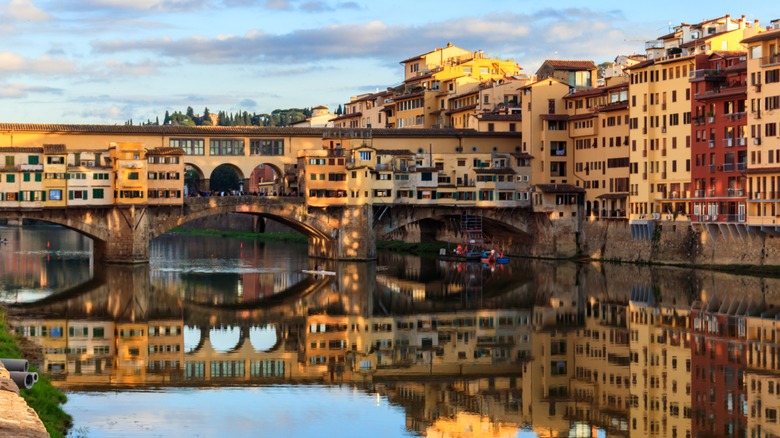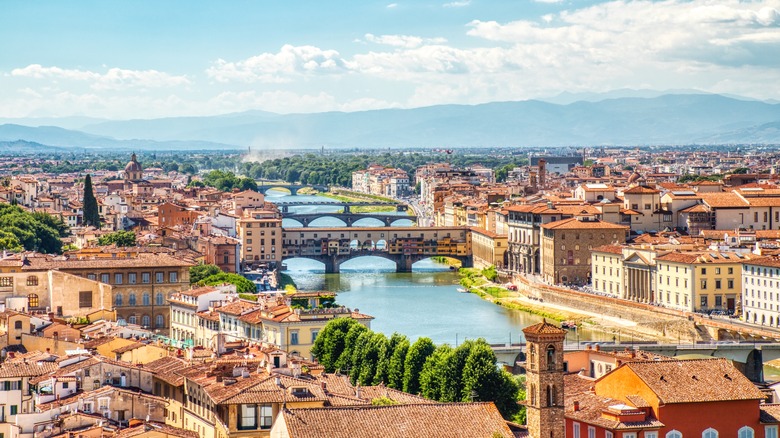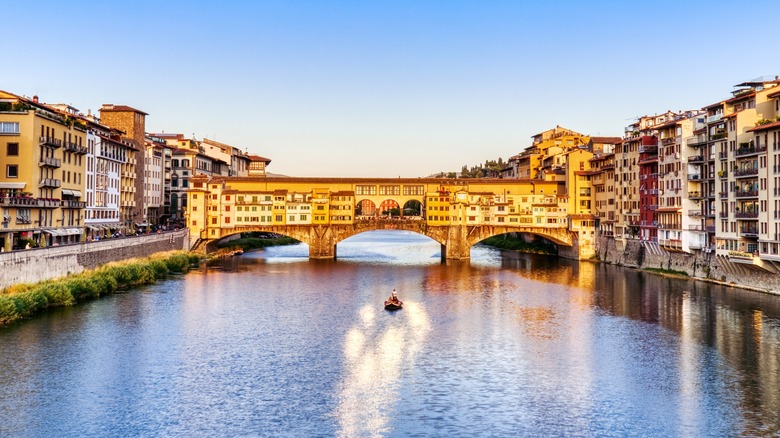One Of Italy's Oldest Bridges Is An Overlooked, Picturesque Attraction Lined With Chic Shops
There are many reasons to love Italy, and its sumptuous architecture is arguably top of the list. Structures like the Colosseum and the Pantheon (Stanley Tucci's favorite Roman destination) are revered because of their appearance, but they have also been extensively studied because they have stood the test of time. And when we say "time," we mean a lot of time. However, in among the gorgeous structures are other types of architecture that might be overlooked when considering of the building capabilities of those who have occupied the famous boot-shaped land.
Florence is an architecture lover's dream. From the Cathedral of Santa Maria del Fiore and the largest masonry dome in the world to the imposing Tabernacolo di Santa Rosa tower near the Arno River, the city's commitment to structure splendor is everywhere. When exploring everything Florence has to offer, be sure to include the gorgeous Ponte Vecchio. What makes this occasionally overlooked bridge special is that it is almost like a regular street, lined with shops in buildings that look similar to those on land. The bridge is resilient as well as beautiful, and the Ponte Vecchio has survived wars and even the natural elements around it.
The history of the Ponte Vecchio
While a bridge of some sort has existed at this spot since as far back as the 10th century, the present-day Ponte Vecchio has been keeping Florence connected across the Arno River since the mid-1300s. Fast forward over half a millennium, and it was the only bridge in Florence that survived World War II. Even a flood two decades later couldn't bring it down. With all this tumult, you might be able to tell that some components of this bridge are newer than others, and the resulting layered look reflects the years of change that both the bridge and the city have experienced.
Among the notable changes over the centuries are the many shops that line the Ponte Vecchio. Buyers and sellers began to frequent the bridge in the 13th century, and it soon became a hub for goldsmiths and jewelers by the end of the 1500s. This aspect of the Ponte Vecchio evokes medieval themes, which the bridge has managed to retain into the modern era, complete with a bust of goldsmith Benvenuto Cellini in the middle of the bridge. Keep an eye out for him as you browse among the stores, some of which still sell jewelry.
How the Medici shaped the Ponte Vecchio
The Ponte Vecchio's southern end meets with the Oltrarno district, a pretty area of Florence that Rick Steves says to visit for a less-touristy Italian experience. Once you step off the Ponte Vecchio, you'll soon find Borgo S. Jacopo, another street packed with fun shopping opportunities. Many shops here (and throughout Oltrarno) are filled with items made and sold by locals. Also in Oltrarno is Palazzo Pitti, where the famous Medici family — who ruled over Florence and Tuscany during the Renaissance — lived. The Medici family had a major hand in the Ponte Vecchio's history, and members of the family commissioned a private passageway for themselves over its shops so that they could cross without being seen. This addition still adorns the top layer of the Ponte Vecchio.
A unique way to see the Ponte Vecchio's unique architecture is by going on a river cruise. Every year, from May through September, the Renaioli Association takes visitors out on the river with small restored boats from the 19th century that are unique to the boating traditions of Florence. Trips pass by the Uffizi Galleries, San Jacopo sopr'Arno Church, and, of course, the spectacular yet often overlooked Ponte Vecchio.


